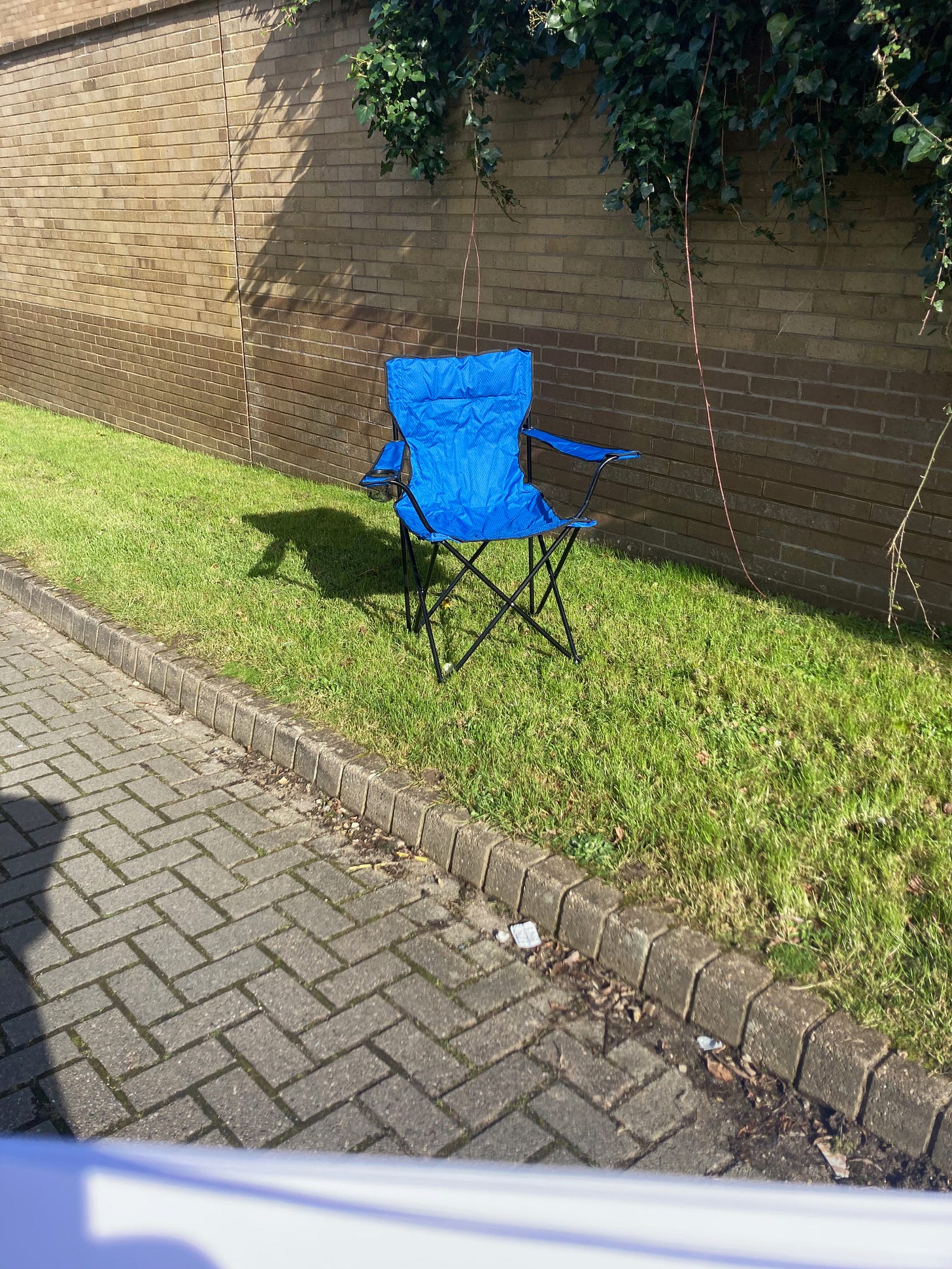There’s a tiny strip of grass outside my flat. Seven or eight metres long and about one metre wide, it’s perfectly bench-shaped.
Like many such flats, my block accommodates a mixture of the recently arrived, the chronically underprivileged and the long-term lost (I’m in the third group). Some of the flats are home to families with small children. Managed by a private company on behalf of a freeholder, there have been a few challenges. But the windows get cleaned and on the whole they’re a safe landing pad.
As well as the car park, my flat overlooks other people’s gardens, a wall, and the strip of grass. Despite its sterility, hedgehogs have occasionally trundled across the strip. Nearby brambles protect blackbirds’ nests. In the deep silence of lockdown a pair of woodpeckers scouted out a tree above the brambles.
Lockdown is a relative term. While furloughed neighbours improved their gardens and shared beers over fences, we flat dwellers looked on.
Incarcerated in a UNESCO Biosphere Reserve. ‘An important meeting place of rich natural and cultural heritage in a stunning, diverse landscape’ says its website. Somewhere where we ‘celebrate life by recognising the connections between people and nature’.
My leaseholder agreement disagrees. Residents may not erect window boxes nor feed the birds. No plant pots or other items are to be placed in communal areas. Washing may not be hung anywhere visible from outside.
In our fragments of space, connections and freedoms are are permitted or withheld by someone not present.
During hot weather, a downstairs neighbour put up a camping chair in the car park and sat there with her dog, setting the chair behind the open hatchback of her car - that portable bubble of personal territory. I realise I do something similar, leaning on my car when I take a cup of coffee outside. Surely no-one can object to me leaning on my own car? Its ownership is not in dispute.
What we need, of course, is a place to be outdoors - a pleasant, welcoming spot, somewhere to spend an hour without feeling conspicuous or uncomfortable.
It’s easy to feel powerless in current times. In a recent slump, I grasped at the strip of grass as somewhere I could regain some agency, improve living conditions for me and my neighbours. After all, I’ve helped create to a community garden before. It’s even still there: https://artilfracombe.co.uk/cow-green-community-garden/
So I resolve to make some flyers to put in my neighbours’ letterboxes to see if anyone else is interested. In this community of enforced troglodytism, don’t we deserve a nurturing living environment too?
But first I need to find out who owns the land. The District Council has an online mapping tool which purports to show who is responsible for maintaining which patches of land. The strip of grass gets cut by someone, after all. Murky green shading on the map suggests the Town Council. So I look up my local councillors and smile when one of them is the landscape architect I worked with on the previous community garden (although he doesn’t recognise me at first).
A few emails later we meet outside the flats. The Councillors are supportive and even offer to take over some of the communication with residents. My vision of a bench surrounded by spring bulbs and wildflowers is quickly quashed: a bench would encourage people to hang around and there have already been complaints about this. It’s another conversation entirely and for now I admit that I should know this. Instead the Councillor wisely suggests the way to do it is to start gently: just sow the patch with wildflowers at first, get people used to it being used differently. Softly, softly.
The snag is that the patch isn’t owned by the Town Council after all. And so begins a quest to uncover ownership. The Councillors check with the local housing associations and draw a blank. I check with the Salisbury-based Property Management Company that manages the flats from their Plymouth offices. They don’t know either, but think it might still be owned by the original developer of the site. But they don’t have a record of who that was. Only partly tongue-in-cheek, I ask the Councillors if we can claim the patch of grass ourselves if no-one else does.
Next I dig out the paperwork from buying the flat to look for clues. The lease names a local building company as the owners of the land at the time the site was developed, but further documents suggest it was later transferred to another party.
In addition to the £22 a week I pay to the Property Management Company, I also pay £8 a week to another private company, the Freeholder of the land. Like the Property Management Company, Mintoncrest Ltd is also based two counties to the east, in Salisbury. A quick search on Companies House confirms they’e a Public Limited Company incorporated in 1990, the year the flats were built. The nature of business is listed as ‘Buying and selling of own real estate’. There are three company directors - two individuals and a further company called Sarum Heritage Ltd. Interestingly, Sarum Heritage Ltd has just one officer, Mintoncrest Ltd.
I can’t pretend to understand these labyrinthine arrangements, but I do want to improve my immediate environment, make it welcoming and more biodiverse. Perhaps I’ll get to chat to my neighbours there.
I make Mintoncrest Ltd my next port of call and go back inside.





Gosh. I admire your persistence!! If I were you, I'd probably just start planting and let the rest of them work out who on earth owns the land :) Whoever objects just ask them if they own the land...and when you finally do find the land (grass strip) owner then you can invite them to the opening event of the community grass party - and persuade them to cut the ribbon and gift the land to you! :) Keep us posted!